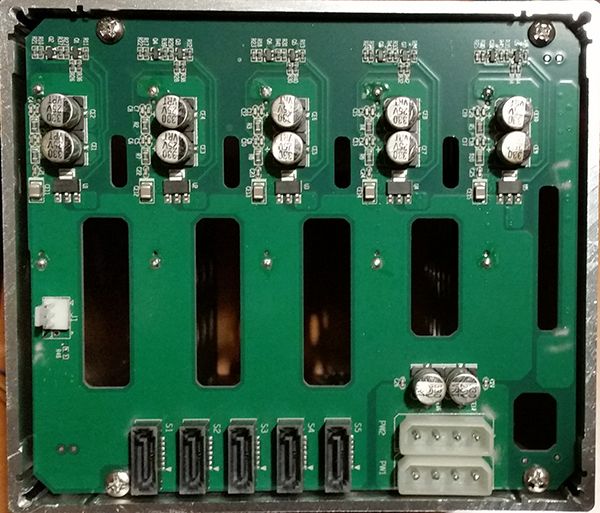Darren Myers
Guru
- Joined
- Oct 2, 2014
- Messages
- 925
This, this build needs to be somewhere for everyone who makes a FreeNAS server to see
I have some sorbothane feet on their way, hopefully that will prove effective ;-)This is more or less normal. To reduce the vibrations you can add weight to the case and/or add silent-blocks between the case and the shelf and/or use some vibration isolation system between the drives and the case (but be careful because that can lead to less vibration dampening on the drives and reduce their lifetime) ;)
This, this build needs to be somewhere for everyone who makes a FreeNAS server to see
That case supports full size PCI-E expansion cards, so I expect there will be sufficient room. The PSU actually sits above the card location - see this rear photo: https://picasaweb.google.com/m/view...25031/5983116412587702209/5983116431438106290Trevor,
Can you confirm physical space in the Lian Li case for a 10GB NIC when the power supply is installed? Thanks
Not looking like launch before Oct to Dec given how little detail there has been thus far. If improvements are anything like Xeon-D over previous generation (or Avoton was over Atom) then it should be a big step up, but we won't know until first silicon is spun and engineering samples get a viewing, which could be as late as June 2016. Hey, it's not like Intel are under real pressure from AMD or anyone else at this point, so they have the luxury of time to develop fabrication processes properly and go in with good yields from day one. That extends release cycles a bit, but we get more consistent (and cheaper) products as a result. Enough competition to keep them innovating without the pressure to release products prematurely to stave off competition - it's a model that has been working pretty (surprisingly) well ever since Intel moved away from P4 clock wars and into the first Core series.The Denverton follow on to Avoton will hopefully show up next year. Should be 16 airmont cores (14nm) but I haven't found any other details published yet.
Those are luxurious openings when compared with your typical rackmount's openings. It is a bit hard to cool five drives in one of those things, but I've been pleasantly surprised by how cool my drives run in 3-in-2 bays with an 80mmx25mm fan. They're relatively quiet, too.Unfortunately, the drives were running hot - high 50's to mid 60°C temps, constantly. That wouldn't do - I wanted sub-50°C, if possible. I looked at potential solutions, working within my design limitations (low noise enclosure, because it sits in my home office). Disassembling the enclosure to see if I could design a new shroud to allow attaching a larger fan, I realised nothing I did would get around this:

This is the circuit board that the drives attach to within the enclosure. The fan sits on this side and sucks are through those holes. As you can see, they're not exactly large. In fact, they're extremely restrictive. On the other side of the circuit board you can see electrical traces close to those holes, so there's no scope for increasing their size.
Man, those cables are such a mess!</sarcasm>I was being a bit lazy/pressed for time, so I didn't go to the effort I could have tidying up cables:
Would this work better?Take a look at the position they've used for the two SATA power connectors:
Perhaps, but that doesn't make it a good situation. There's absolutely no reason the circuit board needs to impede airflow so much. They could easily design a board that is 80% smaller while retaining all connectors and circuit traces.Those are luxurious openings when compared with your typical rackmount's openings. It is a bit hard to cool five drives in one of those things, but I've been pleasantly surprised by how cool my drives run in 3-in-2 bays with an 80mmx25mm fan. They're relatively quiet, too.
